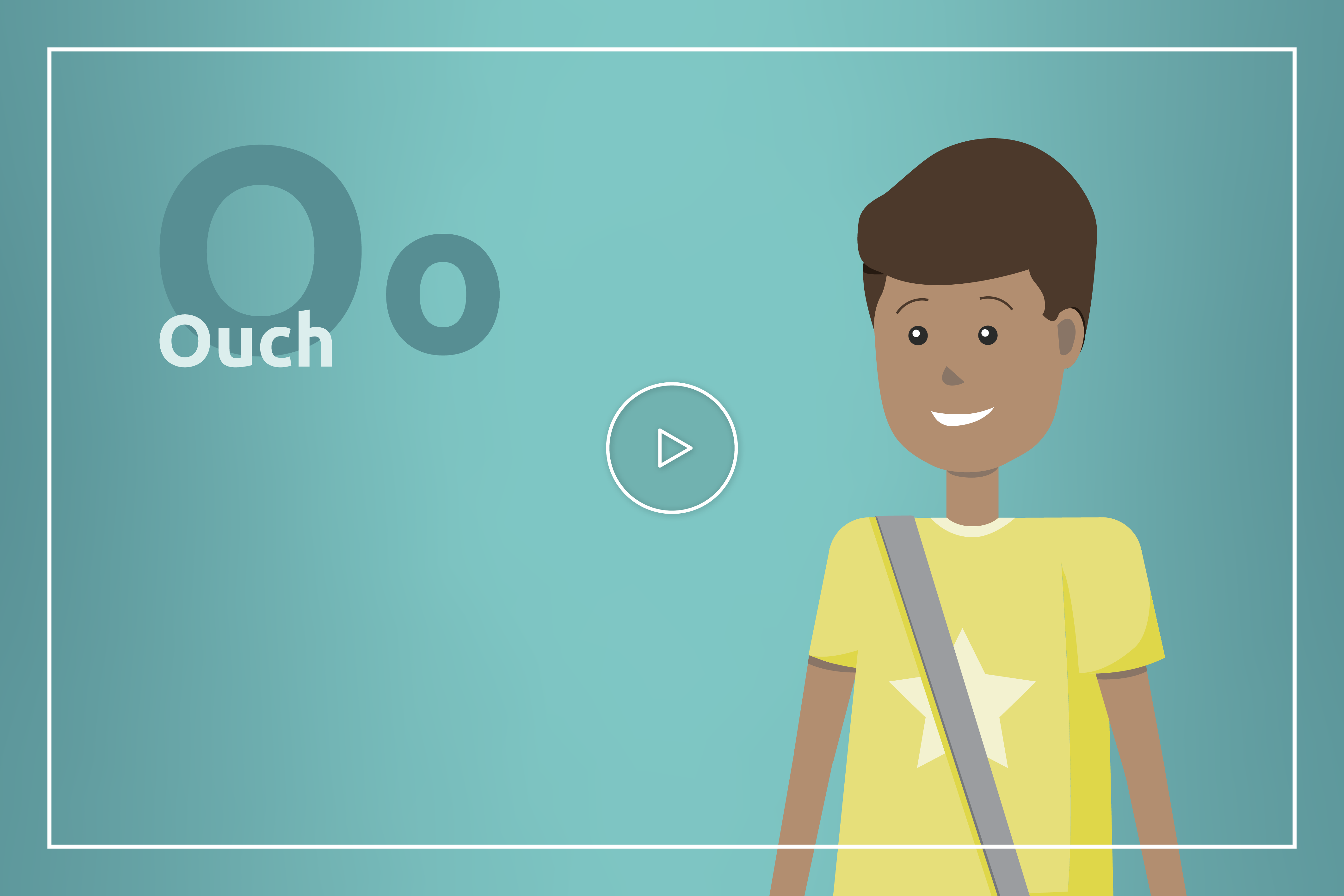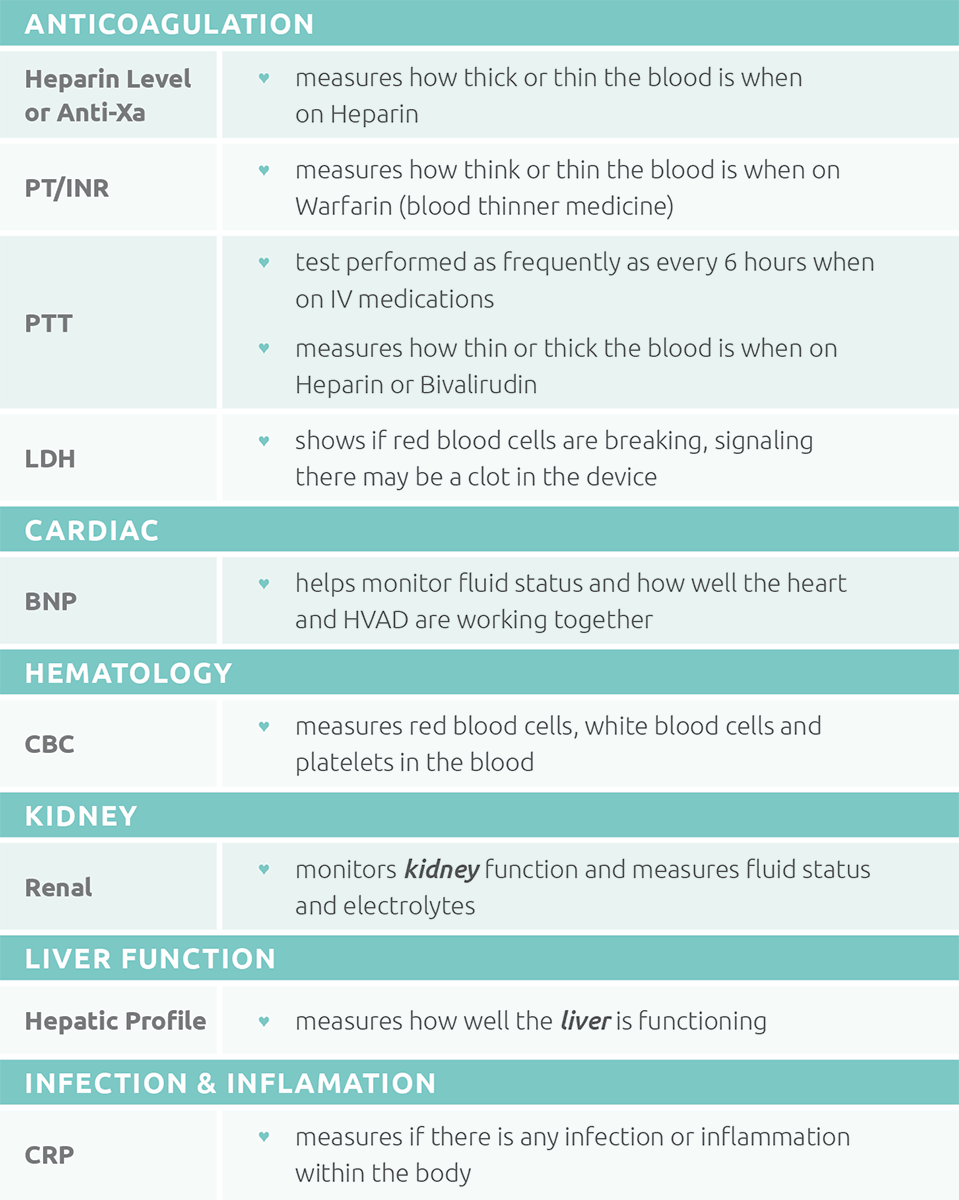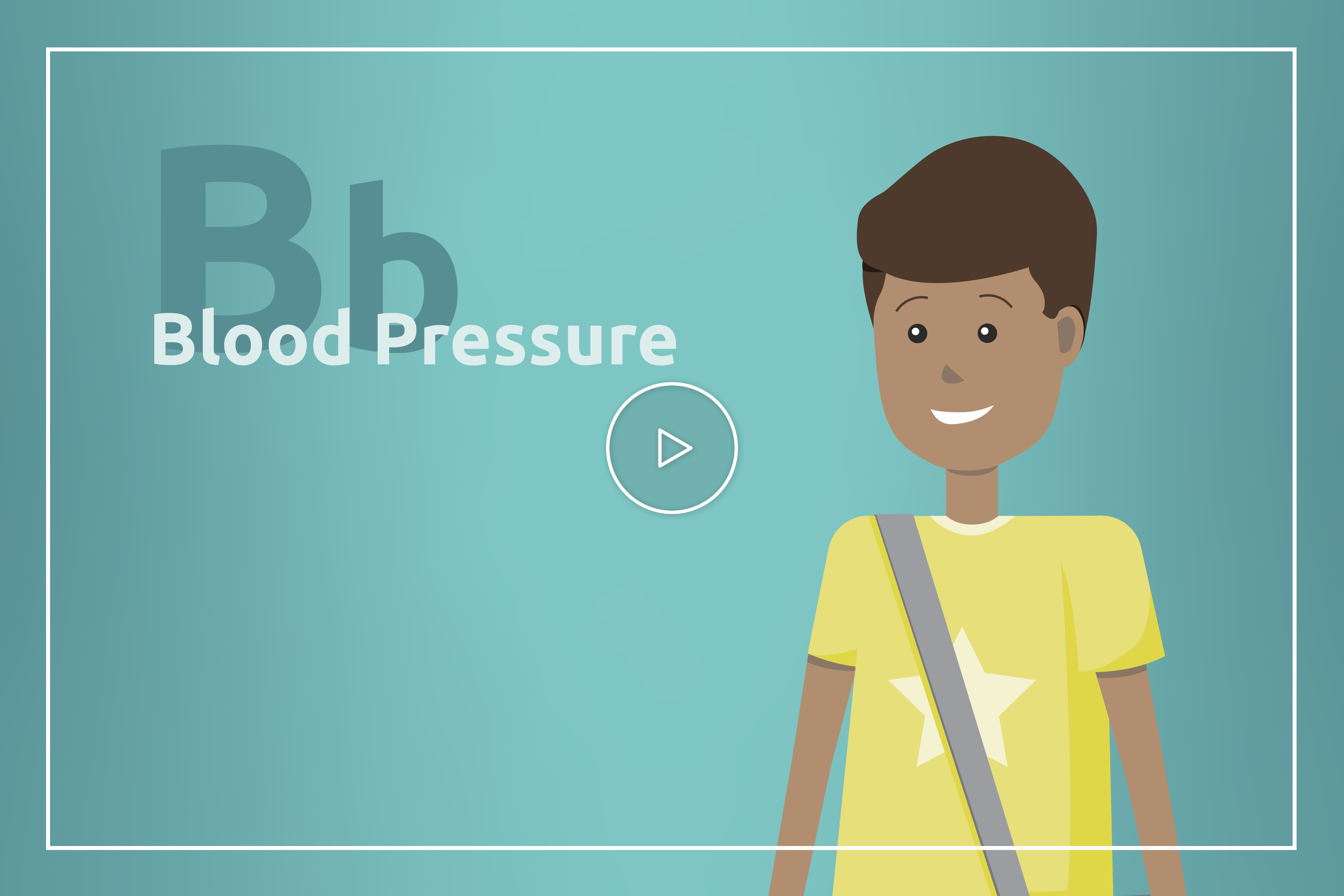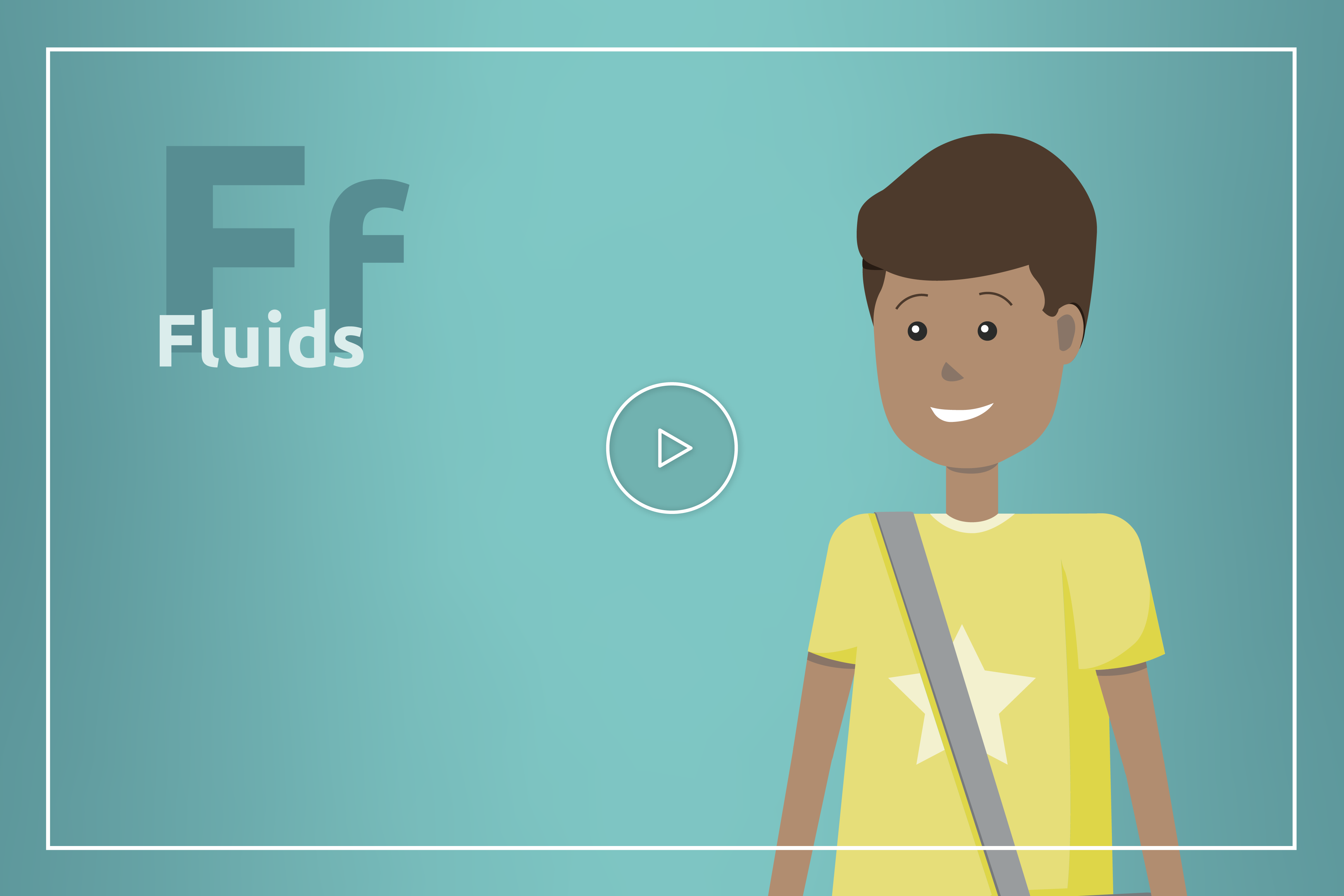SynCardia (TAH-t)
Overview
Your Surgery Journey
Overview
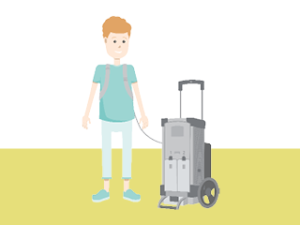
The SynCardia Total Artificial Heart (TAH-t) is different from the other VADs because it replaces the lower chambers of the heart (ventricles) and the four valves. The TAH-t pumps blood to both the lungs and body. Two tubes (cannulae) come out of the skin and connect to an external machine called a driver. The driver supplies pulses of air to pump blood in and out of the TAH-t. The TAH-t can fit in some larger children, teenagers, and adults. This device is most commonly used for patients who will get a heart transplant.
-
Device Components
-
Benefits
-
Risks
Device Components
There are several parts of the SynCardia TAH-t system.
SynCardia (TAH-t) Ventricles
The TAH-t pump replaces the sick or weak heart ventricles. The TAH-t pump has two chambers—an air chamber and a blood chamber—that are separated by a membrane. The air chamber connects to the cannula and driver, which pushes air in and out. The air moves the membrane in the correct position to fill and eject the blood chamber. On the blood chamber side, the blood enters and exits the chamber.
There are two different TAH-t pump sizes: 50 cc and 70 cc. The 50 cc pump is generally used in children and small adults. The 70 cc pump is used in bigger people. Prior to surgery, the care team will review your testing to determine which size device is appropriate for your body size.
Cannulae
The two cannulae come out of the body above the belly and connect the right and left TAH-t pumps to the Companion 2 Hospital Driver (C2).
Companion 2 (C2) Driver (Hospital Cart & Caddy) or Freedom® Portable Driver (Freedom Driver)
The C2 driver is a large machine that pushes air in and out of the TAH-t pump. While in the hospital, the hospital cart is most often used. It shows all of the settings and will allow your care team to make any changes. There are also waveforms that help the team determine how well the device is working. For hospital mobility, the C2 driver caddy may be used as well.
The Freedom Driver is a small machine used if you are eligible for discharge from the hospital. It fits in a backpack and allows for more mobility.
Electrical Power
The batteries for the C2 driver usually last approximately 1 and a half hours. The Freedom Driver batteries last approximately 4 hours and can be recharged through either a standard electrical outlet or a car charger.
Pump Parameters
There are many numbers that you will see on the screen of your SynCardia TAH-t:
- Heartrate: The rate at which the device is set to beat/eject blood to the body.
- Fill Volume: The amount of volume that fills the ventricles with each beat. For the 50 cc device, the fill volume should be around 30–40. For a 70 cc device, the fill volume should be 50-60 ml. Generally, the amount of volume in the ventricle should only fill 2/3rds of the device.
- Left and Right Pressure: The amount of air pressure that the device uses to pump blood to the lungs and body.
- Percent Systole: The percentage of time that the device spends ejecting the blood.
- Cardiac Output: The amount of blood that is ejected to the body.
- Left and Right Vacuum: The amount of air pressure needed to pull back the membrane and fill the blood chamber. This is always a negative number.
Alarms
Alarms can be loud and scary, but they are designed to let us know when something is not working properly. There is no need to panic when you hear an alarm. Your care team will review the steps that you or your caregiver can take to correct the problems.
Benefits
 The SynCardia TAH-t is beneficial for patients with right and left heart failure, hypertrophic cardiomyopathies, and post-transplant graft failure. It completely takes over the work of both ventricles so that you may recover and wait for a transplant.
The SynCardia TAH-t is beneficial for patients with right and left heart failure, hypertrophic cardiomyopathies, and post-transplant graft failure. It completely takes over the work of both ventricles so that you may recover and wait for a transplant.
The device provides a large amount of blood volume to the body which helps the other organs (kidney, liver, and lungs) recover if they are damaged.
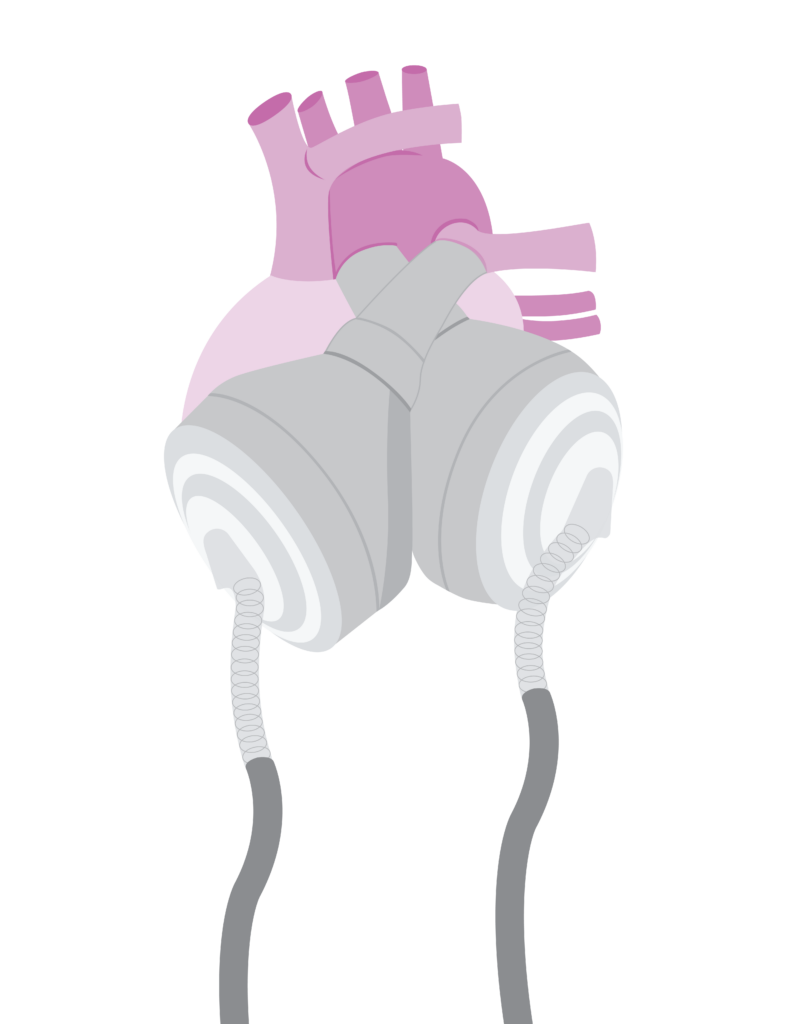
Risks
 There are some risks with SynCardia TAH-t but your care team will work hard to keep you safe.
There are some risks with SynCardia TAH-t but your care team will work hard to keep you safe.
Infection
The soft cannula will come out of your lower chest and will need to be cleaned frequently. This is important because bacteria lives on your skin and may cause an infection at your cannula site. You may feel nervous the first few times your dressings are changed, but your care team will be there to support you.
High Blood Pressure
High blood pressure can affect the way the device works, so your care team will treat your blood pressure with medicines to keep it within a good range.
Bleeding
There is a risk of bleeding with all VADs, but it is more common with the SynCardia. To prevent clots from forming in the device, you have to be on a blood thinner. Sometimes the blood thinner will lead to bleeding that may require a change in medicines, a blood transfusion, or in some cases, a surgery to stop the bleeding. Your care team will manage your blood thinner medicine and levels carefully to try to prevent bleeding. Sometimes, even with perfect levels bleeding will occur.

Stroke
There is a risk of stroke with all VADs. A clot can form in the VAD, become dislodged, and may travel up a blood vessel to the brain. A blood clot in the brain leads to a decreased blood flow to the brain in that specific area, and this is called a stroke. Your care team will manage your blood thinner medicines and levels carefully to try to prevent a stroke. Sometimes, even with perfect levels, a stroke will occur.
Your care team will monitor you for the following symptoms:
- Headache
- Confusion
- Numbness and/or tingling on one side of the body
- Weakness on one side of the body
- Slurred speech
Device Malfunction
If the device were to stop working, blood flow to your body would completely stop until the device can be restarted. In addition, back up equipment will be nearby.
Noise
As the air compressors move the blood in and out of the body, it creates a pretty noisy environment. The heart rate is usually set between 125–145 beats per minute and you will hear each beat. Usually people get used to the sound but sometimes it can create anxiety or prevent sleep (noise cancelling headphones and earplugs may help).
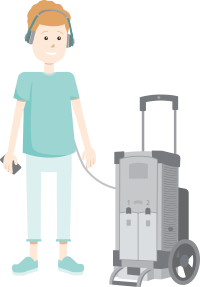
Device Components
There are several parts of the SynCardia TAH-t system.
SynCardia (TAH-t) Ventricles
The TAH-t pump replaces the sick or weak heart ventricles. The TAH-t pump has two chambers—an air chamber and a blood chamber—that are separated by a membrane. The air chamber connects to the cannula and driver, which pushes air in and out. The air moves the membrane in the correct position to fill and eject the blood chamber. On the blood chamber side, the blood enters and exits the chamber.
There are two different TAH-t pump sizes: 50 cc and 70 cc. The 50 cc pump is generally used in children and small adults. The 70 cc pump is used in bigger people. Prior to surgery, the care team will review your testing to determine which size device is appropriate for your body size.
Cannulae
The two cannulae come out of the body above the belly and connect the right and left TAH-t pumps to the Companion 2 Hospital Driver (C2).
Companion 2 (C2) Driver (Hospital Cart & Caddy) or Freedom® Portable Driver (Freedom Driver)
The C2 driver is a large machine that pushes air in and out of the TAH-t pump. While in the hospital, the hospital cart is most often used. It shows all of the settings and will allow your care team to make any changes. There are also waveforms that help the team determine how well the device is working. For hospital mobility, the C2 driver caddy may be used as well.
The Freedom Driver is a small machine used if you are eligible for discharge from the hospital. It fits in a backpack and allows for more mobility.
Electrical Power
The batteries for the C2 driver usually last approximately 1 and a half hours. The Freedom Driver batteries last approximately 4 hours and can be recharged through either a standard electrical outlet or a car charger.
Pump Parameters
There are many numbers that you will see on the screen of your SynCardia TAH-t:
- Heartrate: The rate at which the device is set to beat/eject blood to the body.
- Fill Volume: The amount of volume that fills the ventricles with each beat. For the 50 cc device, the fill volume should be around 30–40. For a 70 cc device, the fill volume should be 50-60 ml. Generally, the amount of volume in the ventricle should only fill 2/3rds of the device.
- Left and Right Pressure: The amount of air pressure that the device uses to pump blood to the lungs and body.
- Percent Systole: The percentage of time that the device spends ejecting the blood.
- Cardiac Output: The amount of blood that is ejected to the body.
- Left and Right Vacuum: The amount of air pressure needed to pull back the membrane and fill the blood chamber. This is always a negative number.
Alarms
Alarms can be loud and scary, but they are designed to let us know when something is not working properly. There is no need to panic when you hear an alarm. Your care team will review the steps that you or your caregiver can take to correct the problems.
Benefits
 The SynCardia TAH-t is beneficial for patients with right and left heart failure, hypertrophic cardiomyopathies, and post-transplant graft failure. It completely takes over the work of both ventricles so that you may recover and wait for a transplant.
The SynCardia TAH-t is beneficial for patients with right and left heart failure, hypertrophic cardiomyopathies, and post-transplant graft failure. It completely takes over the work of both ventricles so that you may recover and wait for a transplant.
The device provides a large amount of blood volume to the body which helps the other organs (kidney, liver, and lungs) recover if they are damaged.

Risks
 There are some risks with SynCardia TAH-t but your care team will work hard to keep you safe.
There are some risks with SynCardia TAH-t but your care team will work hard to keep you safe.
Infection
The soft cannula will come out of your lower chest and will need to be cleaned frequently. This is important because bacteria lives on your skin and may cause an infection at your cannula site. You may feel nervous the first few times your dressings are changed, but your care team will be there to support you.
High Blood Pressure
High blood pressure can affect the way the device works, so your care team will treat your blood pressure with medicines to keep it within a good range.
Bleeding
There is a risk of bleeding with all VADs, but it is more common with the SynCardia. To prevent clots from forming in the device, you have to be on a blood thinner. Sometimes the blood thinner will lead to bleeding that may require a change in medicines, a blood transfusion, or in some cases, a surgery to stop the bleeding. Your care team will manage your blood thinner medicine and levels carefully to try to prevent bleeding. Sometimes, even with perfect levels bleeding will occur.

Stroke
There is a risk of stroke with all VADs. A clot can form in the VAD, become dislodged, and may travel up a blood vessel to the brain. A blood clot in the brain leads to a decreased blood flow to the brain in that specific area, and this is called a stroke. Your care team will manage your blood thinner medicines and levels carefully to try to prevent a stroke. Sometimes, even with perfect levels, a stroke will occur.
Your care team will monitor you for the following symptoms:
- Headache
- Confusion
- Numbness and/or tingling on one side of the body
- Weakness on one side of the body
- Slurred speech
Device Malfunction
If the device were to stop working, blood flow to your body would completely stop until the device can be restarted. In addition, back up equipment will be nearby.
Noise
As the air compressors move the blood in and out of the body, it creates a pretty noisy environment. The heart rate is usually set between 125–145 beats per minute and you will hear each beat. Usually people get used to the sound but sometimes it can create anxiety or prevent sleep (noise cancelling headphones and earplugs may help).

Your Surgery Journey
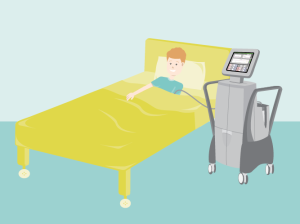
Navigating such a big and important surgery can feel overwhelming. There are many people and resources available to help you get through your surgery journey and ultimately get you living a more comfortable and healthy life. You can also prepare by reading and learning as much as you can before heading into surgery.
-
Preparing for Surgery
-
After Surgery
-
Recovery Self Care
-
Discharge
Preparing for Surgery
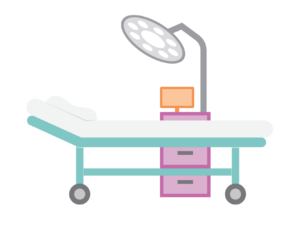
Throughout your journey, your care team is there to support and guide you, as well as answer any questions or concerns you have.
Before your surgery, doctors called anesthesiologists will visit you. They are responsible for keeping you asleep during surgery. You will not feel any pain while you are asleep. All you will remember is traveling down to the operating room.
Your Surgery Day
How is the VAD implanted in the chest?
The surgery can take all day. The surgeon performs a sternotomy, which involves opening the chest, cutting away the diseased ventricles and valves, and connecting the TAH-t to the upper heart chambers (or atria). This will leave a scar on the chest. A heart and lung bypass machine is required to circulate your blood during the surgery.
After Surgery
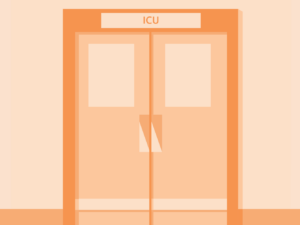
When you wake up from surgery, you will be in the Intensive Care Unit (ICU).
Surgery, and the medications that you were given to keep you asleep, will make you very weak and sleepy. You will have a breathing tube that’s connected to a ventilator (breathing machine) and you will be connected to many lines, tubes, and medical equipment.
This medical equipment is necessary to monitor you and give you the medicines needed for recovery. All the equipment and lines can be startling to see, but they are completely normal. Day by day, your care team will work toward removing lines and tubes. It is also important to get you moving soon after surgery. Getting out of bed as soon as possible will help your body heal.
As with any surgery, you will probably feel some pain afterwards. Learn more in the interactive below about what to expect.
Once your care team thinks you’re strong enough to be more awake and breathe on your own, your medicines keeping you sleepy will be turned off. Your breathing tube will be removed, and you will be given oxygen using a nasal cannula or mask.
As time goes on, you’ll be able to drink clear fluids like water and apple juice. When your medicines supporting your heart have been decreased, you’ll be able to eat regular food again. Your care team may decide to give you a boost of nutrition, feeding you through a special tube in your nose called a nasogastric tube.
Cardiac Step-Down Unit
The Cardiac Step-Down Unit, or cardiac floor, is where patients are transferred after the ICU. It is for patients who are not as critically ill but still need to be in the hospital. In the cardiac step-down unit, your focus will be on getting stronger. In addition, this is the time that education becomes even more important. In some cases being discharged out of the hospital may be possible. Your care team will discuss this with you.
Recovery Self Care
When you have a VAD there is a lot for you and your caregivers to learn.
What labs could you need?
You will have laboratory testing (labs or bloodwork), done at various scheduled times or whenever your care team feels they need to follow you closer. These labs tell your doctor how well your body is functioning with the new device.
Click on the image to view a list of possible requested labs.
What tests could you need?
Testing will become part of normal life. Testing will be done at scheduled times and whenever your team feels like you may need closer surveillance.
- IMPORTANT: Once you have a SynCardia (TAH-t), DO NOT have an MRI test. An MRI uses strong magnets that attract metal objects and would damage your TAH-t.
You may, however, have an exercise test on a stationary bike, treadmill, or 6-minute walk to determine how well you are doing with the TAH-t.
What medicines could you take?
In the hospital, medicine will be given through an IV. Your care team will change those medicines to be given by mouth as you recover. It’s important the medicines are taken at the same time every day. Use a pill box to keep your medicines organized. Inform your care team if you take any additional medicines NOT prescribed by them. Learn more about medicines in the interactive below.
You will take aspirin to prevent platelets from sticking together and forming a clot in your TAH-t.
Warfarin (Coumadin)
Once your care team determines the time is right, you will take warfarin pills by mouth. Warfarin is the most important medicine you will take, but it can be difficult to get your dose (the amount you take) correct. The dose needed will go up and down frequently depending on your INR and it can take a number of days to get it right. Once your dose is correct, your IV blood thinner medicine will be turned off. Warfarin is what makes your INR (blood levels for anticoagulation or how thick or thin your blood is) increase. Below are causes for:
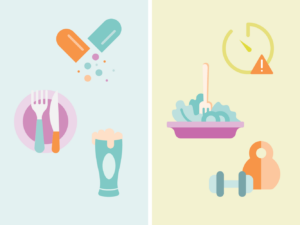
Causes for High INR (thin blood):
- New medicines
- Prolonged vomiting/diarrhea*
- Prolonged inability to eat*
- An increase in alcohol consumption
- A decreased intake of food or drink containing vitamin K
*Discuss with your care team
Causes for Low INR (thick blood):
- Missed doses of warfarin
- An increased intake of food or drink containing vitamin K
- Large increase in exercise
Learn more about warfarin (Coumadin) in the Exploring Medicine Treatment Options module and learn more about anticoagulation through the interactive below.
Blood Pressure Medicines
At times, on a TAH-t you may have high blood pressure and require medicines to keep the TAH-t pumping well and can decrease your risk of stroke.
Antibiotics
Antibiotics are given in the operating room and ICU to prevent infection. They are also given if your cannulae get infected. You may need antibiotics indefinitely to prevent infection. Antibiotics can make your INR high or low. Immediately notify your care team if you start taking an antibiotic.
Stomach Ulcers & Acid Reflux Medicines
Medicines to prevent “heartburn” are used to decrease the acid in the stomach. This may help with decreasing any stomach discomfort you may have.
Diuretics (medicines to remove extra body water)
Diuretics were important when you were in heart failure. When you are on a TAH-t you should need less, but you still may need a small amount to get the fluids in your body just right.
What should you know about your blood pressure?
Keeping your blood pressure in a healthy range is very important. Your care team will determine a target blood pressure goal and adjust medicines to meet it. Blood pressure can be monitored using a blood pressure cuff. Learn more in the interactive below about how your care team will help you stay at a healthy blood pressure.
Why is it important to care for your cannula site?
Caring for your cannulae will help you avoid getting an infection.
What should you be eating and drinking?
Once you have your VAD, you must stay on a stable diet. Eating a consistent healthy diet will help you heal and get stronger.
Fluid balance is very important to maintain TAH-t flow. If there is too much fluid inside the heart and body (for example, if you’re drinking much more than usual), the TAH-t may not be able to handle the extra fluid. Learn more about why it’s important to balance how much fluid you are drinking:
How are you feeling?
For some patients, having a TAH-t and needing lots of medical care can be hard. Many patients that have TAH-t surgery notice an improvement in symptoms while they are in the hospital, but it can take months for you to get stronger and recover. As you recover, you or your caregiver may feel sad, worried, or even angry at times. This is normal. Be honest about how you’re feeling and talk with your care team if you have these feelings or any changes in behavior. Taking care of your emotional and mental health is a very important part of your care. Your care team will be able to connect you with the right support services.
Discharge
 In rare cases, TAH-t patients may be discharged out of the hospital on the Freedom® Portable Driver. If your care team feels it’s safe for you to return home and go to school or work, multiple steps will occur to ensure your safety. Your care team will explain the specific accomplishments you must achieve in order to be discharged.
In rare cases, TAH-t patients may be discharged out of the hospital on the Freedom® Portable Driver. If your care team feels it’s safe for you to return home and go to school or work, multiple steps will occur to ensure your safety. Your care team will explain the specific accomplishments you must achieve in order to be discharged. When should you call your care team?
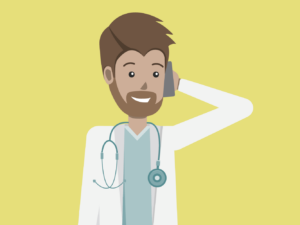
If you are discharged out of the hospital, you will have a detailed communication plan. The plan will include a phone number to call. Your care team will want be in contact communication with you. Things you should tell them include:
- Change in pump parameters, equipment issues, and alarms
- Blood pressure outside your goal ranges
- Changes in your diet
- New medicines
- Pain or bleeding
- Fever
- Changes to cannula sites
- Red, pink, cola, or tea colored urine
- Changes in your mood or anything else you feel uneasy about
What should I tell my local emergency services? (Medical Services/Fire/Utilities)
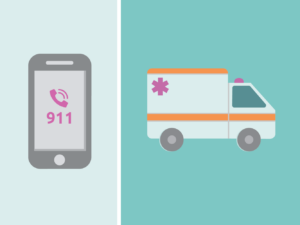
Either you or your care team members should notify your local emergency medical department when you are discharged. It is nice for them to know you are at home with life-saving equipment. If you lose electricity, you must relocate to a new location. You can contact your care team if you have questions about what to do.
- IMPORTANT: In the event that an emergency occurs, please tell the emergency medical services team you have a SynCardia (TAH-t). Standard CPR and code medicines may be unsafe.
Medical Safety Card
Always carry your medical safety card with you in case of an emergency. If you don’t have a medical safety card, download and fill out the ACTION VAD Emergency Medical Safety Card below.
Preparing for Surgery

Throughout your journey, your care team is there to support and guide you, as well as answer any questions or concerns you have.
Before your surgery, doctors called anesthesiologists will visit you. They are responsible for keeping you asleep during surgery. You will not feel any pain while you are asleep. All you will remember is traveling down to the operating room.
Your Surgery Day
How is the VAD implanted in the chest?
The surgery can take all day. The surgeon performs a sternotomy, which involves opening the chest, cutting away the diseased ventricles and valves, and connecting the TAH-t to the upper heart chambers (or atria). This will leave a scar on the chest. A heart and lung bypass machine is required to circulate your blood during the surgery.
After Surgery

When you wake up from surgery, you will be in the Intensive Care Unit (ICU).
Surgery, and the medications that you were given to keep you asleep, will make you very weak and sleepy. You will have a breathing tube that’s connected to a ventilator (breathing machine) and you will be connected to many lines, tubes, and medical equipment.
This medical equipment is necessary to monitor you and give you the medicines needed for recovery. All the equipment and lines can be startling to see, but they are completely normal. Day by day, your care team will work toward removing lines and tubes. It is also important to get you moving soon after surgery. Getting out of bed as soon as possible will help your body heal.
As with any surgery, you will probably feel some pain afterwards. Learn more in the interactive below about what to expect.
Once your care team thinks you’re strong enough to be more awake and breathe on your own, your medicines keeping you sleepy will be turned off. Your breathing tube will be removed, and you will be given oxygen using a nasal cannula or mask.
As time goes on, you’ll be able to drink clear fluids like water and apple juice. When your medicines supporting your heart have been decreased, you’ll be able to eat regular food again. Your care team may decide to give you a boost of nutrition, feeding you through a special tube in your nose called a nasogastric tube.
Cardiac Step-Down Unit
The Cardiac Step-Down Unit, or cardiac floor, is where patients are transferred after the ICU. It is for patients who are not as critically ill but still need to be in the hospital. In the cardiac step-down unit, your focus will be on getting stronger. In addition, this is the time that education becomes even more important. In some cases being discharged out of the hospital may be possible. Your care team will discuss this with you.
Recovery Self Care
When you have a VAD there is a lot for you and your caregivers to learn.
What labs could you need?
You will have laboratory testing (labs or bloodwork), done at various scheduled times or whenever your care team feels they need to follow you closer. These labs tell your doctor how well your body is functioning with the new device.
Click on the image to view a list of possible requested labs.
What tests could you need?
Testing will become part of normal life. Testing will be done at scheduled times and whenever your team feels like you may need closer surveillance.
- IMPORTANT: Once you have a SynCardia (TAH-t), DO NOT have an MRI test. An MRI uses strong magnets that attract metal objects and would damage your TAH-t.
You may, however, have an exercise test on a stationary bike, treadmill, or 6-minute walk to determine how well you are doing with the TAH-t.
What medicines could you take?
In the hospital, medicine will be given through an IV. Your care team will change those medicines to be given by mouth as you recover. It’s important the medicines are taken at the same time every day. Use a pill box to keep your medicines organized. Inform your care team if you take any additional medicines NOT prescribed by them. Learn more about medicines in the interactive below.
You will take aspirin to prevent platelets from sticking together and forming a clot in your TAH-t.
Warfarin (Coumadin)
Once your care team determines the time is right, you will take warfarin pills by mouth. Warfarin is the most important medicine you will take, but it can be difficult to get your dose (the amount you take) correct. The dose needed will go up and down frequently depending on your INR and it can take a number of days to get it right. Once your dose is correct, your IV blood thinner medicine will be turned off. Warfarin is what makes your INR (blood levels for anticoagulation or how thick or thin your blood is) increase. Below are causes for:

Causes for High INR (thin blood):
- New medicines
- Prolonged vomiting/diarrhea*
- Prolonged inability to eat*
- An increase in alcohol consumption
- A decreased intake of food or drink containing vitamin K
*Discuss with your care team
Causes for Low INR (thick blood):
- Missed doses of warfarin
- An increased intake of food or drink containing vitamin K
- Large increase in exercise
Learn more about warfarin (Coumadin) in the Exploring Medicine Treatment Options module and learn more about anticoagulation through the interactive below.
Blood Pressure Medicines
At times, on a TAH-t you may have high blood pressure and require medicines to keep the TAH-t pumping well and can decrease your risk of stroke.
Antibiotics
Antibiotics are given in the operating room and ICU to prevent infection. They are also given if your cannulae get infected. You may need antibiotics indefinitely to prevent infection. Antibiotics can make your INR high or low. Immediately notify your care team if you start taking an antibiotic.
Stomach Ulcers & Acid Reflux Medicines
Medicines to prevent “heartburn” are used to decrease the acid in the stomach. This may help with decreasing any stomach discomfort you may have.
Diuretics (medicines to remove extra body water)
Diuretics were important when you were in heart failure. When you are on a TAH-t you should need less, but you still may need a small amount to get the fluids in your body just right.
What should you know about your blood pressure?
Keeping your blood pressure in a healthy range is very important. Your care team will determine a target blood pressure goal and adjust medicines to meet it. Blood pressure can be monitored using a blood pressure cuff. Learn more in the interactive below about how your care team will help you stay at a healthy blood pressure.
Why is it important to care for your cannula site?
Caring for your cannulae will help you avoid getting an infection.
What should you be eating and drinking?
Once you have your VAD, you must stay on a stable diet. Eating a consistent healthy diet will help you heal and get stronger.
Fluid balance is very important to maintain TAH-t flow. If there is too much fluid inside the heart and body (for example, if you’re drinking much more than usual), the TAH-t may not be able to handle the extra fluid. Learn more about why it’s important to balance how much fluid you are drinking:
How are you feeling?
For some patients, having a TAH-t and needing lots of medical care can be hard. Many patients that have TAH-t surgery notice an improvement in symptoms while they are in the hospital, but it can take months for you to get stronger and recover. As you recover, you or your caregiver may feel sad, worried, or even angry at times. This is normal. Be honest about how you’re feeling and talk with your care team if you have these feelings or any changes in behavior. Taking care of your emotional and mental health is a very important part of your care. Your care team will be able to connect you with the right support services.
Discharge
 In rare cases, TAH-t patients may be discharged out of the hospital on the Freedom® Portable Driver. If your care team feels it’s safe for you to return home and go to school or work, multiple steps will occur to ensure your safety. Your care team will explain the specific accomplishments you must achieve in order to be discharged.
In rare cases, TAH-t patients may be discharged out of the hospital on the Freedom® Portable Driver. If your care team feels it’s safe for you to return home and go to school or work, multiple steps will occur to ensure your safety. Your care team will explain the specific accomplishments you must achieve in order to be discharged. When should you call your care team?

If you are discharged out of the hospital, you will have a detailed communication plan. The plan will include a phone number to call. Your care team will want be in contact communication with you. Things you should tell them include:
- Change in pump parameters, equipment issues, and alarms
- Blood pressure outside your goal ranges
- Changes in your diet
- New medicines
- Pain or bleeding
- Fever
- Changes to cannula sites
- Red, pink, cola, or tea colored urine
- Changes in your mood or anything else you feel uneasy about
What should I tell my local emergency services? (Medical Services/Fire/Utilities)

Either you or your care team members should notify your local emergency medical department when you are discharged. It is nice for them to know you are at home with life-saving equipment. If you lose electricity, you must relocate to a new location. You can contact your care team if you have questions about what to do.
- IMPORTANT: In the event that an emergency occurs, please tell the emergency medical services team you have a SynCardia (TAH-t). Standard CPR and code medicines may be unsafe.
Medical Safety Card
Always carry your medical safety card with you in case of an emergency. If you don’t have a medical safety card, download and fill out the ACTION VAD Emergency Medical Safety Card below.

